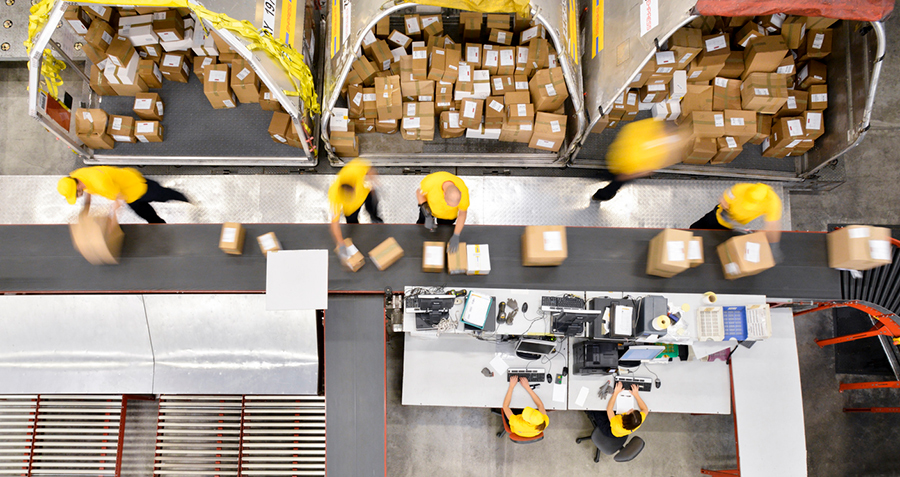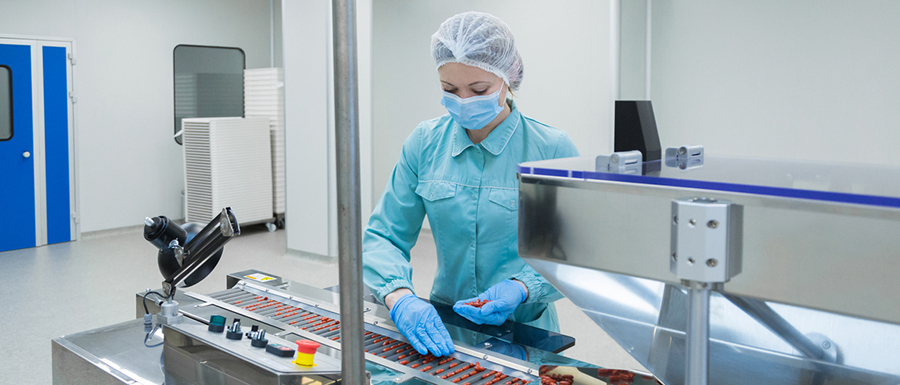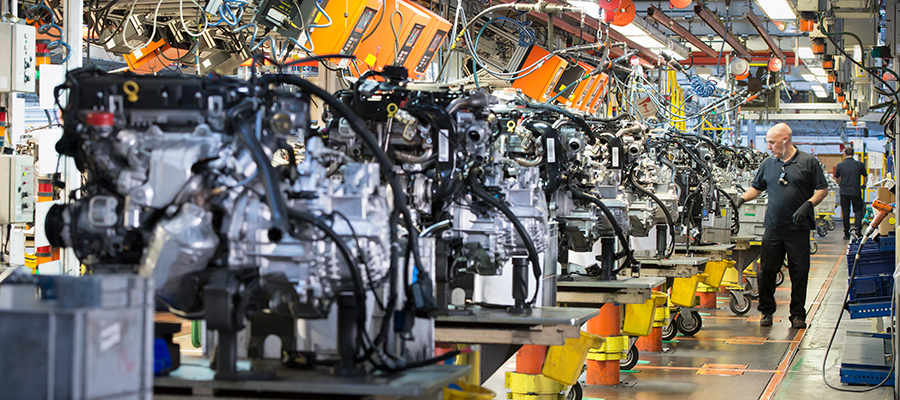By Udayan Joshi, Digital Solutions Architect, Hitachi Social Innovation Business, with contributions from Anthony Caputo, Solution Architecture and Design, Smart Spaces and Video Intelligence, Hitachi Vantara
Manufacturing 4.0 promises to unlock business value through lower costs, higher revenues and greater agility by merging operational technology (OT) and information technology (IT) with the internet of things (IoT). With the advent of digital technologies such as data analytics, artificial intelligence and machine learning, cloud computing, robotics, augmented reality and advanced data communication networks, Manufacturing 4.0 is transforming the way manufacturers manage and optimize their operations, from product design and production to distribution and customer satisfaction.
However, the landscape is complex. Digital technologies can be used in a wide variety of ways to optimize the supply chain, improve productivity and quality, and make other improvements. But the disparate environment of siloed legacy technology investments means that even with the promise of a smart, connected enterprise, many traditional manufacturers are mystified as to where to begin and how to adopt digital transformation in manufacturing.
A practical starting point for manufacturers embarking on the digital transformation journey is the implementation of LiDAR technology to optimize their operations. Today, 3D LiDAR is revolutionizing manufacturing by improving worker safety and productivity. By handling repetitive and high-risk tasks, LiDAR technology frees up workers to focus on tasks that require their expertise. Additionally, 3D LiDAR technology has been effective in ensuring worker health and safety, especially during the pandemic, by creating a safer and more efficient manufacturing environment.
LiDAR (Light Detection and Ranging) technology is similar to radar or sonar. However, instead of using radio or sound waves, LiDAR measures the time of flight (ToF) of a pulsed laser to gather three-dimensional, real-time information about the physical world.
Measuring the depth distance of each pixel of a picture allows captured pictures to be converted into a three-dimensional “point cloud.” Additionally, by measuring 30 times in a second (30 frames per second, or 30fps), it tracks the motions made by people, machines and objects within the monitored space.
LiDAR technology has been widely used in autonomous vehicles (AVs) and for geographical mapping from drones. New innovations have dramatically reduced costs, making LiDAR more affordable for use in spaces such as retail stores, warehouses, airports, event spaces, healthcare campuses and manufacturing sites.
In the manufacturing workspace, LiDAR offers granular, privacy-protected, real-time insights into the performance efficiencies and bottlenecks of operations, safety, and quality, thus creating smart spaces. With the combination of LiDAR sensors and video analytics techniques, the data from LiDAR can deliver valuable insights for enhancing operational efficiency, reducing waste, and improving worker safety.
LiDAR delivers 3D visibility of the physical world with real-time insights, without collecting personal identifiable information. Because LiDAR uses point clouds and not natural light, it does not capture information about the identity of individuals within its field of view. Furthermore, LiDAR sensors are unaffected by ambient light conditions. The ability to apply analytics on a three-dimensional light cloud delivers higher accuracy and deeper insights compared to applying analytics on traditional two-dimensional video or image data.
Here are three uses of LiDAR in different manufacturing environments.
Many activities within the manufacturing environment involve repeated cycles of specific movements, such as on assembly lines. Quality and productivity depend heavily on how closely a human worker or a robot follows the right steps to create a quality product, on time and within budget.
Any deviation can have significant and cumulative adverse effects, including poor-quality products and inefficient operations that can result in any number of negative impacts, from increased costs to a drop in a company’s brand reputation. Therefore, it’s crucial to continuously monitor and analyze these activities to identify anomalies. This is made possible by 3D LiDAR technology, which is instrumental in achieving and sustaining peak performance in the realm of smart manufacturing.

The pharmaceutical industry faces many important environmental requirements for cleanrooms. Something as minor as dropping a tool on the floor and failing to decontaminate it before reusing or disposing of it properly can result in an entire batch of expensive product being discarded — or worse, allowed into the marketplace.
Deviations like this can have negative consequences, including impacts on quality, profitability, safety and even the environment. LiDAR can both monitor for compliance and issue an alert for any deviation from protocol so that any potential damage is immediately addressed.

Within the automotive industry, workers are typically required to use certain tools and processes for specific activities. For example, an auto chassis may require that a special joint be tightened with two hands using a particular tool. This task can be awkward for workers, who may sometimes use one hand to tighten the joint because it’s easier.
However, not following the procedure correctly can weaken the joint and cause it to fail before the end of its expected lifespan. Again, LiDAR can detect this process anomaly and raise an alert before damage is done, thereby ensuring quality and enabling digital transformation.

By detecting anomalous behavior, LiDAR solutions can issue alerts for “slips and falls,” security breaches, unsafe behavior, intrusion into restricted areas, or unsafe distances between people and machines. LiDAR solutions can also detect anomalous behavior on assembly lines to help managers coach workers to achieve higher quality and avoid movements that can negatively impact the health of workers.
LiDAR plays an important role in worker safety by not only monitoring for compliance but also by providing operational insights and intelligence that can lead to improvements in processes and equipment that make the work environment safer for everyone. For example, LiDAR has applications in life sciences, where inappropriate chemical handling could result in serious safety issues and environmental pollution.
Analytics generated from the LiDAR video analytics platform can help prevent waste or the compromise of resources ranging from factory scrap to environmental hazards. These valuable insights can lead to safer, higher quality products by helping to ensure compliance and avoid accidents, and can deliver an improved environmental footprint.
Additionally, anomalies can be further analyzed over time to detect other critical patterns so that the root causes of these issues can be addressed.
LiDAR technology from Hitachi brings real-time, granular 3D insights into smart spaces, machinery and behavior. It enhances operations, customer experience and safety without capturing personally identifiable information.
Hitachi builds much of the software and analytics tools that are incorporated into our LiDAR solutions. We also supply the necessary infrastructure components, such as optimized storage and compute infrastructure. Our experts not only develop the video analytics algorithms, they also have a deep understanding of smart manufacturing industry processes and pain points. This variety of capabilities makes us unique in the marketplace.
At Hitachi, we believe that when your factory is running at its best, you’re contributing to the wellbeing of your customers and employees as well as improving your company’s energy use by reducing your carbon footprint — making life better for everyone on the planet. In fact, LiDAR capabilities and benefits directly align with Hitachi’s mission of powering good in the world.
Manufacturing 4.0 transformation doesn’t have to be complicated or expensive. The journey can begin with a simple step — one empowered by real-time 3D insights and alerts. By embracing 3D LiDAR technology in manufacturing, businesses can unlock a pathway towards smarter and more sustainable manufacturing practices, revolutionizing the industry in an accessible and cost-effective manner.
Now that you know there is a simple option that can help you get started on your factory transformation, what are your next steps?

Digital Solutions Architect, Hitachi Social Innovation Business
Udayan’s expertise is in applying digital technology capabilities to architect solutions that address the double bottom-line and delivering a positive social impact while fulfilling business requirements across manufacturing, transportation and smart spaces. Udayan delivers full stack solution architecture and design support by leveraging a wide range of Hitachi and broader ecosystem technology capabilities, for a wide range of solutions including Predictive Maintenance and Asset Management and ML/AI based failure prediction models and process re-engineering, Manufacturing Intelligence solutions and innovative applications of video analytics including LiDAR.

Solution Architecture and Design, Smart Spaces and Video Intelligence
Hitachi Vantara
Anthony Caputo has been a senior technical consultant since 1998, with the past 15 years working in solution architectures for large complex systems including city-wide and/or wide area deployments in wireless, digital video security, video intelligence and analytics, and process improvement for public transportation, education, utilities, manufacturing, retail and government. As a published author, Anthony wrote McGraw-Hill’s Build Your Own Server and Elsevier’s best-selling Digital Video Surveillance and Security, now in its second edition. He has presented at numerous conferences on video analytics, network security and networked video, including at the International Security Conference and Exposition (ISC) in Las Vegas, and the CCTV World Conference in Sydney, Australia.